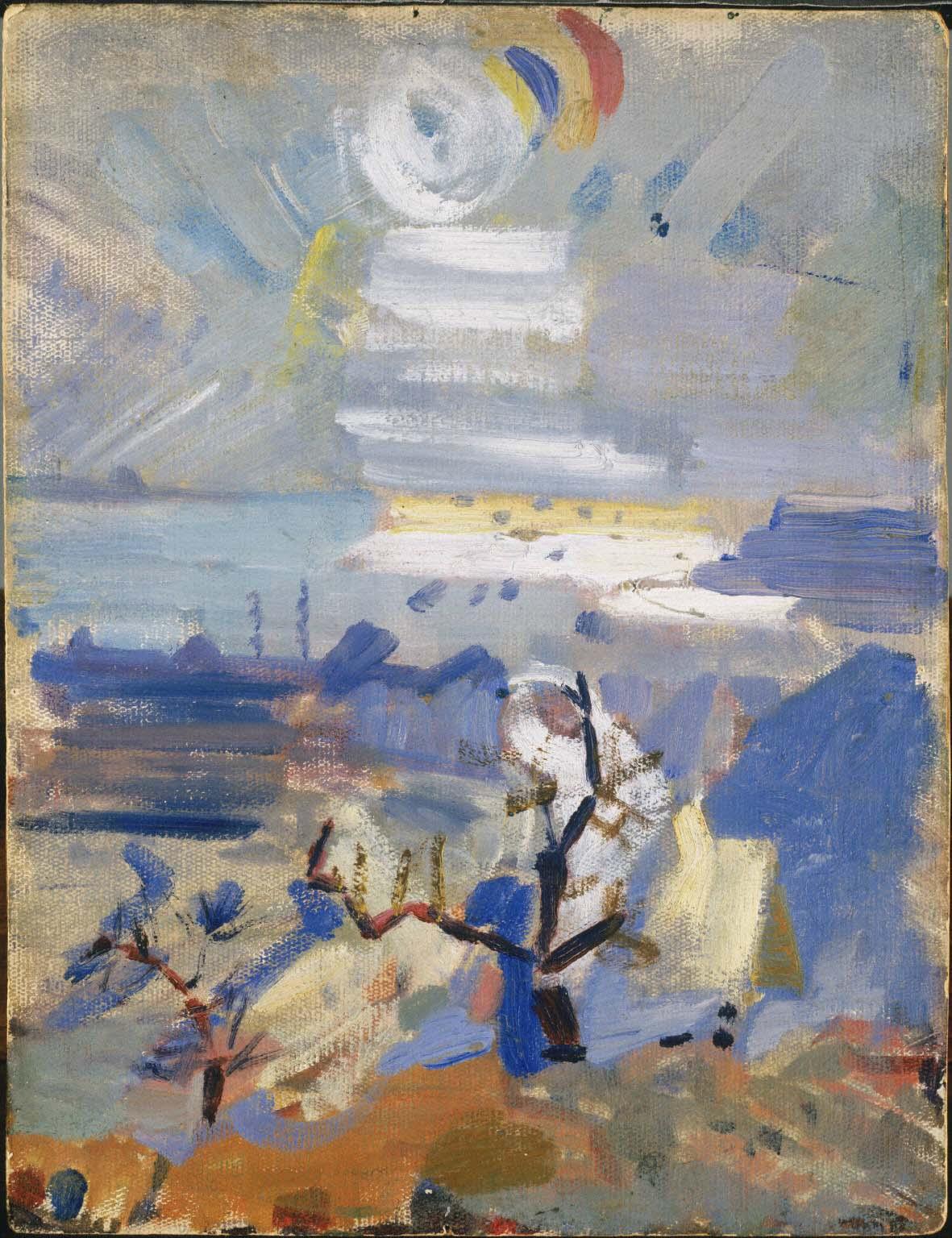Weehawken Sequence, No. 30
John Marin ( ca. 1916 )

John Marin spent his childhood in Weehawken, New Jersey, a town across the Hudson River from midtown Manhattan. Although thoroughly committed to the central premises of European modernism, Marin was an original thinker who transformed those ideas into his own personal style. In 1903–04, Marin began a group of small experimental abstract oils of the landscape of Weehawken. After his return from Europe in 1910, he once again painted scenes of Weehawken. He completed more than one hundred paintings entitled Weehawken Sequence, all on a relatively small scale. These paintings varied significantly from one another, both in subject matter and technique. He painted views of Manhattan, the neighborhood of Weehawken, the local landscape, and scenes of the riverfront. Some were abstractly painted, to the point that it was nearly impossible to distinguish the subject matter, while in others, he put emphasis on color and the oil paint itself, as this was the first time Marin approached oil painting with such vigor and consistency.
Like all of Marin’s work, the Weehawken paintings reveal the artist’s sensitivity to the weather, the seasons, and the atmospheric conditions he observed. Both an impressionist and an expressionist, in Weehawken Sequence, No. 30, Marin captures a moment and location as well as his subjective response to it.